FEATURE: ALLAN MOFFAT – THE LOVE OF A LIFETIME
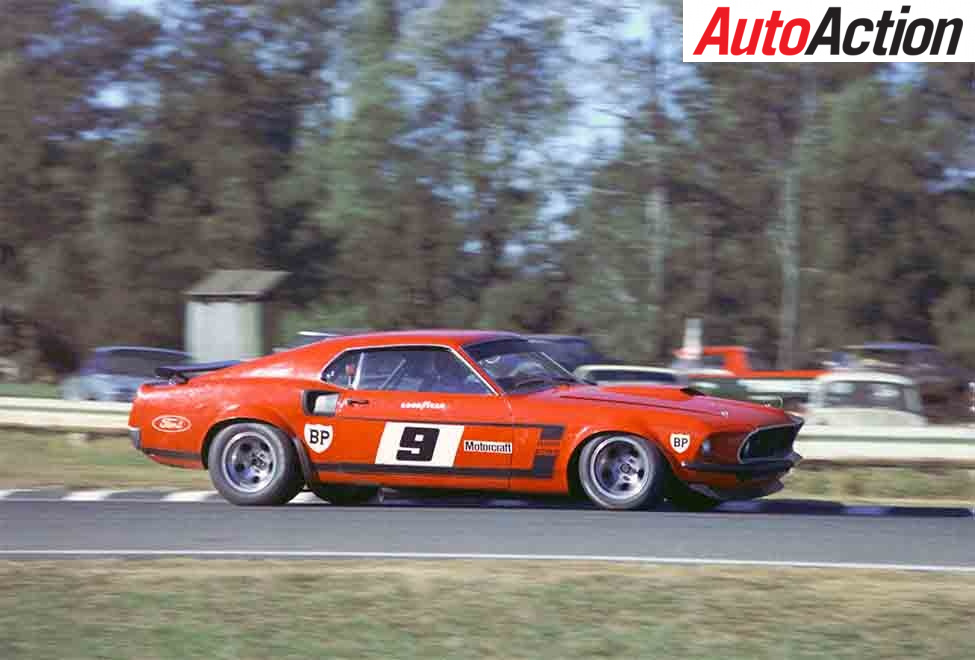
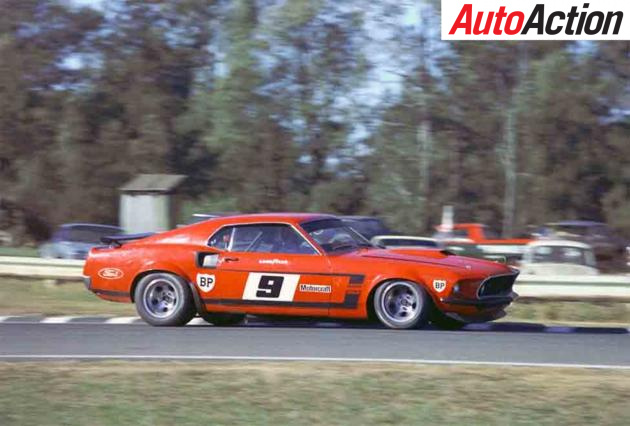
Allan Moffat – The Love of a Lifetime
Nearly 50 years ago Allan Moffat pulled off an amazing coup, when Ford gave him a priceless, irreplaceable, factory-built race car. In the Ford Mustang Trans Am Boss 302 he wrote Australia’s motor racing history.
In this except from his new autobiography Moffat tells how he got the Mustang; what it meant to his career; and why he never won at ATCC title in it…
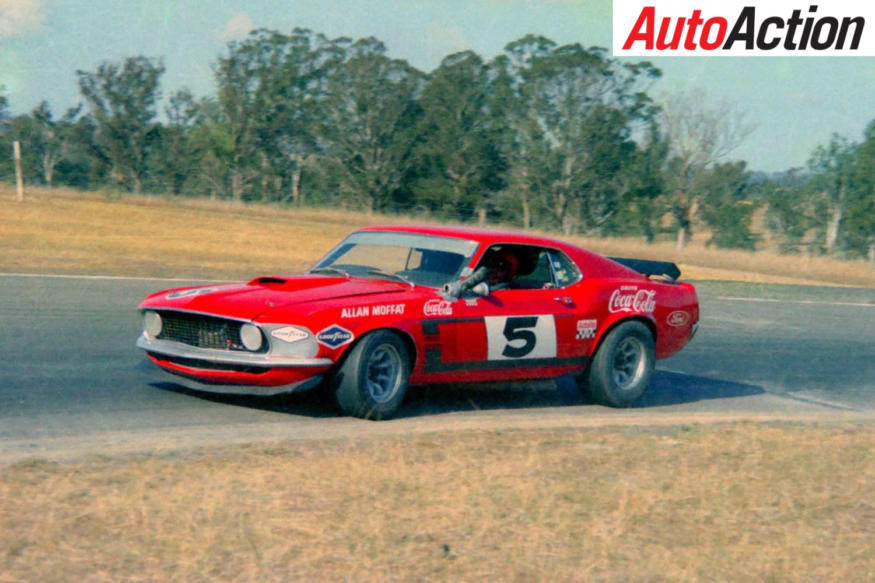
In 1969 Allan Moffat was gifted this Bud Moore built Ford Mustang Boss 302 Trans Am Boss 302.
IN 1969 I fell in love twice.
The first time was with the Trans Am Boss 302 Ford Mustang that would become the definitive race car in my life and one of the most successful touring cars racing in the world. It would win 101 of its 156 starts.
The second time was with 21-year-old Pauline Dean, executive assistance to the marketing director of Coca Cola; the first major commercial sponsor I’d ever secured. Both relationships were powerful, intense, rewarding and successful to a point, but, sadly, neither was to go the distance.
Sacked by Bob Jane, I wrote directly to Jacque Passini, the head of all motor sport for Ford. Like most of the Ford top brass at the time, Passino was a dyed-in-the-wool car guy, but not necessarily a motor racing enthusiast.
He was absolutely no fool. “I’m really not performance nut,” he told Hot Rod magazine in a rare interview. “I am a merchant engaged in the selling of cars.”
The motor racing brief was another step on Passino’s career ladder and he intended to carry it out well. The thing is, he had the authority to keep his promise.
I just thought I had to have a go. My letter to him got through to his secretary, a feat in itself, and I was granted an appointment. I guess I had some credibility; being the outright winner of the third-ever Trans Am race in one of his products must have stood for something, and backing up as a driver in his works team as well as a Kar Kraft test pilot maybe put me on his radar. But I seriously doubted it.
My grandfather always taught me never to sit down in anyone’s office unless they invited you. Passino was a fearsome guy, beautifully dressed, with prematurely greying hair and strong steel glasses. He didn’t ask me to sit.
I explained my case. I was a Ford man through and through. I had unfinished business in Australia – to win the national title – and a Cortina was no longer going to do it for me. I concluded by asking: “Are you able to help with a car?”
He said: “I don’t know where the cars are. Give me a couple of days and I will see what I can dig up for you.”
He asked me where I was staying – a motel down the road, which he passed every day on the way to the office.
It was only when I left his office that I reviewed what he’s said; “I’ll see what I can dig up for you.” Not just “I’ll see what’s available”, but “for you”. Those were the two key words.
I hightailed it back to the motel and briefed the front desk guy. “Sometime, I don’t know when, I am expecting a visitor or a phone call. I won’t be leaving my room until t hen”.
I arranged for room service for all meals – not exactly a feature of the house. And I waited.
On the fourth days, the longest four of my life, the phone rang. It was Passino himself: “Have you got enough money to get to Spartansburg [Bud Moore’s workshop]?”
I said, “Only just”.
He said, “There’s a car waiting for you”.
There was no mention of payment, but I figured that was to come. For the 1969 Trans Am series Ford was having a big go. Through Kar Kraft they had built seven incredibly special Ford Mustangs, the Boss 302s. Three each were to go to Ford’s two works teams – Carroll Shelby and Bud Moore. The seventh would go to Smokey Yunick’s NASCAR team. Their value was incalculable.
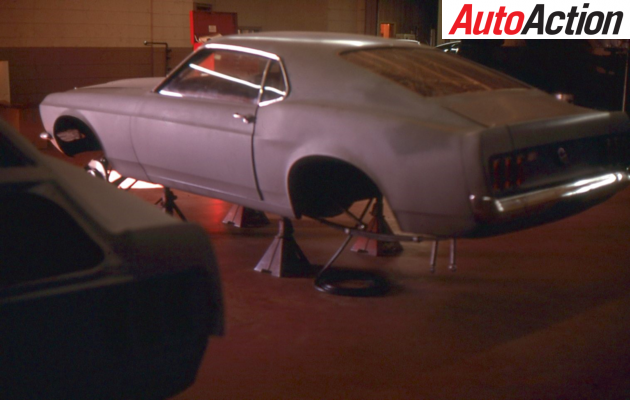
Moffat’s car in it’s grey undercoat at Bud Moore Racing in 1969
I had no expectation even of touching those cars. My goal had been to see if I could buy, at the cheapest possible price, one of the now-redundant 1968 cars.
I was at Bud Moore’s workshop the next day and he wouldn’t look me in the eye. I thought, Who are you to be upset? I’ve come to buy used stock. He walked me into the workshop and there, sitting abreast, were three new Trans Am Boss 302s, each still in their grey undercoats.
“The middle one is yours,” he said.
Jacque Passino had done what probably nobody else in Ford could do, with the possible exception of Henry II. With one word, he’s made one of the magnificent seven mine. At no cost. No cost at all.
I didn’t know why then and I don’t know why now. There are theories. Ford Australia was a favoured outpost of Dearborn. Maybe a favour was being offered way beyond me. Maybe, simply, it’s because I asked and someone liked me.
When I returned to Australia that year I was immediately drafted into Ford’s series production touring car team and became Number One. So perhaps there was a grand plan in which the Mustang was the best incentive ever. I don’t think I’ll ever know.
A lot was happening in Australian motor racing.
For the first time the Australian champion would be decided in a series of five rounds. Two rounds of the championship would have already been held by the time of my return, one won by Pete Geoghegan and the other by Bob Jane, both in Mustangs. Even if I won the last three races, if Pete came second, he would still take the title on accumulated points.
The second major change in motor racing was the emergence of sponsorship on cars. The Mustang may have been free but I needed money, lots of it, to run it and this was the opportunity to provide a big-name sponsor with exposure in a brand-new medium.
Coca-Cola was interested.
My proposal had gone to Victoria and landed on the desk of its visionary marketing manager, David Maxwell. My Coke backing was, in the context of the company’s other involvements, a pretty cheap sponsorship.
I had two reasons to be grateful to him. The other was Pauline Dean.
I entered the 1969 Southern 60 at Sandown and booked passage for myself and the Mustang on a part-passenger, part-cargo aircraft out of New York. The drama started in the air. I’d hopped a plane to make it to JFK International to supervise the loading of the car but we got stuck in a massive mid-air holding pattern. We advanced to fourth landing slot when the pilot came on and said we were low on fuel, and had no option but to divert to Washington.
I arrived in New York late that night to be told the Mustang had already been loaded and would I please take my own seat. I finally persuaded a steward to peep in the hold. He did and reported that there was a big grey car back there that looked like it was going faster than the plane.
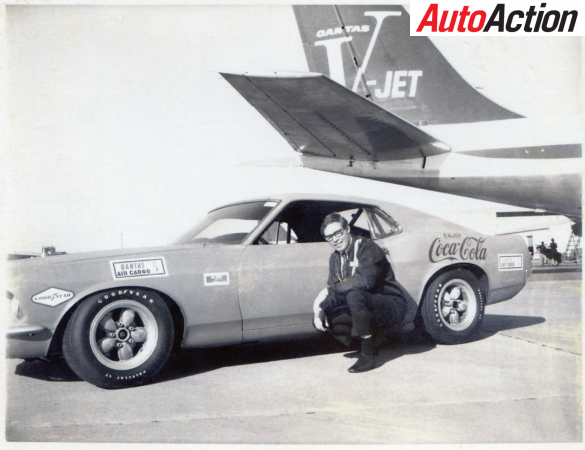
Allan Moffat’s Ford Mustang Trans Am arriving in Australia
In Melbourne we were possibly not as well prepared as we would have liked. The Trans Am was delivered to a holding yard and my only way of moving it to the earthern-floor workshop at 711 Malvern Road in a timely fashion was by towing it. I hitched a rope to the front of the world’s most valuable race car and flat towed it behind my Econoline van.
‘At ‘711’ we examined this beautiful gift for the first time. It was not a Mustang at all. For a start it had been made lightweight by a process of elimination that had stood the test of time throughout race-car development. Fuel tanks were dropped lower and the engine was discretely sunk in its bay to provide a better centre of gravity and even better handling.
We didn’t start the car in the workshop. We’d save that for Sandown.
Peter Thorn painted the Mustang red. Most people assumed it was Coca-Cola’s corporate colours but we weren’t that sophisticated and neither were they. We thought the car looked so good we wanted to paint it Ferrari red.
We arrived at Sandown and our first hit out and the car wouldn’t go. It started with a magnificent crackle and I drove out of the pits, heading for the back straight, when it stuttered and stalled. Back in the pits we went over everything. The electric fuel pump was not getting fuel through to the engine.
That’s when I chased the line all the way from the front to the rear and found under my driver’s seat a surplus of rubber fuel tube tied tightly in a knot. We undid it and shortened it. Fuel flowed and we were away.
To say the car created immense interest was an understatement. A guy from Ford arrived and placed a huge blue Ford decal on the car. I politely removed it and replaced it with a discrete white one that I’d brought from the States. A person from Ampol put a sticker on and I left it there because I assumed money or kind would follow. It didn’t.
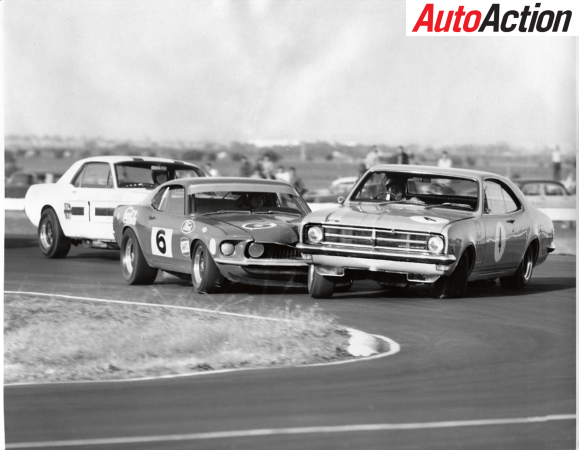
Allan Moffat maintains that this 1969 brake test at Calder was all Norm Beechey’s doing
Then the opposition turned up.
Norm Beechey was the first. He walked straight into the Coke tent and leant heavily on the front fender, testing the suspension. Then he turned around and sat on the bonnet.
I said, “You don’t need to sit on my car any more”. I don’t think I said please.
Bob Jane was next and he simply looked. He was almost polite.
Pete Geoghegan saved his welcome for the track. He drove into my door at the first corner.
Okay, that’s how it’s going to be, I thought, and got out of there fast.
At its first race meeting, the Mustang won three races out of three. It was going to be something to write home about.
Mallala, my first round of the ATCC, was a disaster and it was a forebear of the season. The new engine flown in from the States put me on the front row of the grid alongside Jane and Geoghegan. But two laps later it blew when I was challenging Jane for second. When we pulled the engine down we found it to be bog standard. I’d not been sent a racing engine but a completely stock unit.
There’s one word to describe the Mustang’s first season and that’s ‘harrowing’.
Seasons two, three and four were better but the Mustang never did win the ATCC, and that’s a cause of immense disappointment to me.
In 1969 it never even got on the board, never even scored a point. It even suffered humiliating DNFs and DNS (did not start) in some of the non-championship races. From 1970 to 1972 it cemented its position as one of the most successful and admired cars in the country.
In the 23 ATCC races it contested until its forced retirement at the end of the 1972 season, it won 10, finished on the podium another four times, claimed 14 pole positions and set four lap records. It figured in some of the most controversial incidents in the championship, starred in front of the biggest crowd ever at Oran Park and played a lead role in the touring car battle regarded as the best of all times. Yes in the annual title fight, the best it could manage was a second and a third.
In the first round of the 1970 championship, I’d taken pole on the wet Calder track but there was nothing I could do to stop Beechey pushing past. Then his ill-handling car hit a back marker and he had to stop to pull the Monaro’s guard off the wheel. My win that day, my first in the ATCC, was also the first time since the title began that someone other than an Australian had won a round. Beating Beechey felt good.
It was, however, to be my last win of the season. In seven races I claimed three pole positions and a podium at Sandown. But I was T-boned by Pete Geoghegan off the start at Warwick Farm and I was black-flagged for passing under the yellow flag at Lakeside, past the crash that destroyed Chris Brauer’s ex-Bob Jane Mustang.
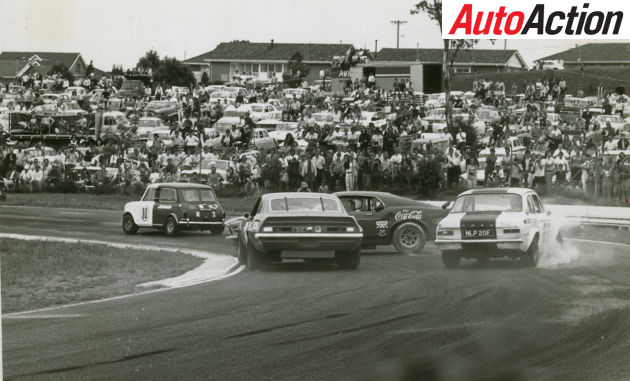
It was often close between Allan Moffat and Bob Jane
I was looking forward to 1971. Then the organisers changed the touring car rules.
Six litres were apparently no longer enough. Now they allowed seven. Bob Jane took maximum advantage, importing a 427-cubic inch Camaro. But the Mustang still handled better and I won the first round at Symmons Plains and was leading the second at Calder when the engine overheated and stopped.
Sandown was a ridiculous farce. The track suited Jane’s Camaro but when it stuck in gear, I took the lead and was heading for victory until an official spotted something, unspecified, hanging beneath the Mustang. There was no visible oil leak and no sign of danger but they black-flagged me anyway and called me into the pits.
For five laps I drove the wheels off the Mustang, building up a gap between me and Jane. It was only on the last lap that I dived into the pits. They looked underneath, said it was okay, and sent me on my way as I knew they would. I took the chequered flag in first, 40 seconds clear of the field. Then the stewards disqualified me for disobeying the flag.
At the Queensland circuits, Surfers Paradise and Lakeside, the Mustang came into its own. It took pole position, fastest lap and the race win at each circuit. My points would have been looking even better if Beechey hadn’t put me off the road at Mallala.
One round remaining at Oran Park and Jane led the series on 34 points from Geoghegan on 32 and me on 31. Effectively it was winner take all.
That Grand Final day was when the pulling power of top-end motor racing was confirmed. Oran Park attracted its biggest crowd on record. Police bulletins were issued to tell people to turn back because the track was packed beyond capacity.
I took pole position and rather than tell the story myself, here’s the race report from from Racing Car News:
Moffat ran away with the race, winning the start while Jane missed a gear and for three laps was third behind Geoghegan as Moffat drew out a useful temporary margin. Jane then started to inch closer by on lap 16 he was leading, as Moffat found the Mustang stuck in second gear and rolled to a temporary halt and Geoghegan, too, howled past.
Moffat then started a great comeback drive pulling in Jane’s 15 second lead at around a second a lap. At just after half distance he caught Geoghegan, dancing the red Mustang from one side to the other, looking for a way through and finally in desperation holding to the outside of the long first corner loop to gain the inside running on the drop into the esses, cannoning off Geoghegan’s door and away after Jane again.
Then the unbelievable happened – a spectator drove a Valiant Pacer road car onto the track. It entered the circuit at the esses and was almost bundled off by Moffat. So hard was Moffat concentrating on the task over overtaking Jane that afterwards he had no recollection of the road car. (The spectator pulled up at the pit entrance and was taken into custody.)
Over the final six laps Moffat was relentless in his pursuit, driving superbly and was right astern of Jane in the final corner. Which of course was one lap too late. Moffat had turned in some of the most spectacular and intense driving ever seen.
I lost the championship by six points, a black flag and a momentarily jammed gearbox, a fault of the Toploader that can only be cured by coming to a complete stop.

Sometimes things do not work… Warwick Farm 1971
I kept the Mustang for another 20 years, moving it from garage to garage, never wanting to be separated from it. It sat on the magic surface plate for a long time – a monument to its success.
For two years I had it on consignment to specialist race-car builders Holman and Moody in the USA. I thought it would fetch $400,000 to $500,000, but there were no takers. Then Australia’s foremost collector David Bowden made me an offer that the bank did not allow me to refuse. He snapped up the car by clearing a debt of just $140,000.
David made her red again and when I was given the honour of driving her at the Australian F1 Grand Prix in Melbourne, I found that, after all those years I’d spent keeping her as the factory intended, she’d been interfered with.
The steering was heavy, she was sluggish in response and, although David has told me I’ll be the only one apart from his family ever to drive her, I’d simply rather not.
Reproduced by permission of the publishers
Allan Moffat: Climbing the Mountain, by Allan Moffat with John Smailes
Published by Allen & Unwin
Available at all good book stores
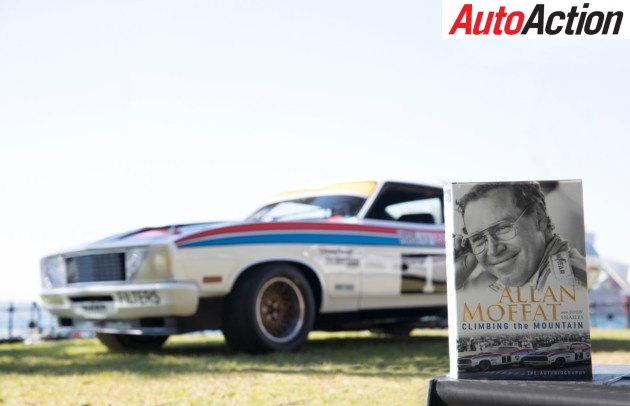
Allan Moffat: Climbing the Mountain, by Allan Moffat with John Smailes
Article originally published in Issue 1722 of Auto Action.
For Auto Action’s latest feature, pick up the latest issue of the magazine, on sale now. Also make sure you follow us on social media Facebook, Twitter, Instagram or our weekly email newsletter for all the latest updates between issues.


